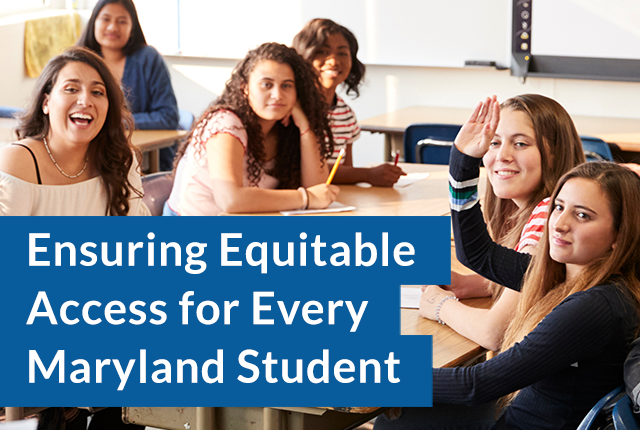

Empirical Research Study of Maryland’s College and Career Readiness (CCR) Standard
The Blueprint for Maryland’s Future has a central goal of ensuring that all Maryland public school students are college and career ready by the end of 10th grade, signifying an ability to transition successfully to postsecondary coursework at a two- or four-year institution or to the workforce. The Blueprint set the interim College and Career Readiness (CCR) standard to be measured by meeting or exceeding the English Language Arts and math content standards on standardized assessments.
Final Report: Maryland College and Career Readiness Empirical Study
The Blueprint required MSDE to commission an empirical study of the interim CCR standard and its adequacy to identify the students who have demonstrated their knowledge of English language arts and mathematics that enables the student to be successful in entry level credit bearing courses or postsecondary education training at a State community college. The research study also compared Maryland’s CCR standards against national and international best practices and to consider potential sources of bias.
MSDE contracted with the American Institutes for Research (AIR) to conduct a multi-part study of the CCR standard. Findings from the predictive validity analysis and content and standards alignment analysis include the following key takeaways, within each of the study’s four objectives:
Objective 1. Identify Knowledge and Skills Required to Be College and Career Ready
Content knowledge considered important for college readiness is covered in the Maryland K–12 content standards.
Skills for success, including collaboration and healthy work habits, are critical for CCR.
Top-performing education systems provide formal CCR counseling early in students’ journeys and clear options for college and career pathways.
Objective 2. Assess the Alignment Between Maryland’s College and Career Ready Academic Content Standards and Postsecondary Expectations
In general, the high school English language arts (ELA), math, and science content standards align to the content expectations of college course content in developmental and first-year credit-bearing courses.
Maryland’s high school ELA and math standards align to content knowledge expectations for certificate-granting programs using two national frameworks that articulate workforce skills.
Objective 3. Assess How Well the Interim CCR Standard and Alternative Specifications of the Standard Predict Postsecondary Progress
The interim CCR standard, utilizing state assessments, correctly classified about half to two-thirds of students as college ready or not college ready at the end of Grade 10.
Adding an alternative way to meet the CCR standard with high school grade point average (HSGPA) increased the percentage of students who meet the CCR standard and improved accuracy rates for predicting first-year college credits earned.
Objective 4. Identify Potential Areas of Bias Within Assessments Used to Determine CCR
Standardized assessments are frequently subject to cultural bias.
Inequities exist in students’ opportunities to prepare for assessments
Interim Reports
Interim Report on the Predictive Validity Analysis
Presentation: Interim Report on the Predictive Validity Analysis
Interim Report on the Content and Standards Alignment Analysis
Presentation: Interim Report on the Content and Standards Alignment Analysis
Other Resources
College and Career Readiness: Roadmap to Implementation Report